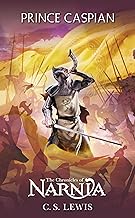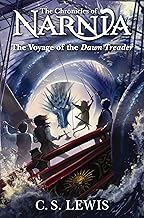
How to Read C.S. Lewis's Books on Chronicles of Narnia
How to Read C.S. Lewis's Books on Chronicles of Narnia
Estimated Reading Time: 10-12 minutes
Introduction
C.S. Lewis, a towering figure in 20th-century literature and Christian apologetics, is perhaps best known for his beloved series, The Chronicles of Narnia. This collection of seven fantasy novels has enchanted readers of all ages since its publication, combining rich storytelling with profound philosophical and theological themes. Born in 1898 in Belfast, Ireland, Lewis's early experiences—marked by loss and a deep love for literature—shaped his worldview and informed his writing.
The Chronicles of Narnia series reflects Lewis's unique perspective on faith, morality, and the human experience. Written during a time of great upheaval in the world—spanning the interwar period and World War II—Lewis's work resonates with themes of hope, redemption, and the struggle between good and evil. His ability to weave complex ideas into accessible narratives makes his exploration of these themes both engaging and thought-provoking.
In this guide, we will delve into three of the most significant books in the Chronicles of Narnia: The Lion, the Witch and the Wardrobe, Prince Caspian, and The Voyage of the Dawn Treader. Each book offers a unique lens through which to understand Lewis's vision of Narnia and the deeper truths it embodies.
Why C.S. Lewis's Perspective Matters
C.S. Lewis's approach to the Chronicles of Narnia is distinctive for several reasons:
-
Integration of Faith and Fantasy: Lewis masterfully combines elements of Christian theology with fantasy, creating a world that is both enchanting and spiritually enriching. His works invite readers to explore moral dilemmas and the nature of good and evil.
-
Philosophical Depth: Unlike many children's authors, Lewis imbues his narratives with philosophical insights that challenge readers to reflect on their beliefs and values. His exploration of themes such as sacrifice, redemption, and the quest for truth resonates across generations.
-
Cultural Commentary: Lewis's writings reflect the historical and cultural context of his time, addressing issues such as war, loss, and the human condition. His insights remain relevant today, prompting readers to consider their own lives in light of the timeless truths he presents.
Overview of Recommended Books
The Lion, the Witch and the Wardrobe
The Lion, the Witch and the Wardrobe is the first published book in the Chronicles of Narnia series and serves as an introduction to the magical world of Narnia. The story follows four siblings—Peter, Susan, Edmund, and Lucy Pevensie—who stumble upon a wardrobe that leads to the enchanted land of Narnia, ruled by the White Witch.
Main Themes and Arguments
The book explores themes of sacrifice, betrayal, and redemption, with Aslan the lion serving as a Christ-like figure. The narrative illustrates the struggle between good and evil, emphasizing the importance of courage and loyalty.
Historical Context and Significance
Published in 1950, the book emerged in the aftermath of World War II, reflecting a world grappling with the consequences of conflict and moral ambiguity. Lewis's portrayal of hope and redemption offers a counter-narrative to the despair of the time.
Key Insights and Takeaways
- The Power of Sacrifice: Aslan's self-sacrifice for Edmund illustrates the Christian concept of atonement and the transformative power of love.
- The Importance of Choice: Characters face moral dilemmas that highlight the significance of free will and personal responsibility.
- The Nature of Redemption: Edmund's journey from betrayal to forgiveness exemplifies the possibility of redemption for all.
Why Read This Book: The Lion, the Witch and the Wardrobe is essential for understanding the foundational themes of the series. It appeals to readers of all ages, particularly those interested in the intersection of faith and literature.
Prince Caspian
Prince Caspian is the second book in the series and continues the adventures of the Pevensie siblings as they return to Narnia to aid Prince Caspian in reclaiming his rightful throne from the usurping King Miraz.
Main Themes and Arguments
This installment emphasizes themes of belief, the power of stories, and the importance of standing up for what is right. It explores the tension between faith and doubt, as well as the role of leadership and courage in the face of adversity.
Historical Context and Significance
Published in 1951, Prince Caspian reflects post-war sentiments, addressing the need for hope and the restoration of faith in a world that had witnessed immense suffering.
Key Insights and Takeaways
- The Role of Faith: The characters' belief in Aslan and the stories of Narnia serves as a reminder of the importance of faith in overcoming challenges.
- The Value of Legacy: The history of Narnia and the stories passed down through generations highlight the significance of cultural memory and heritage.
- Courage in Action: The Pevensies' willingness to fight for justice underscores the necessity of courage in the face of tyranny.
Why Read This Book: Prince Caspian deepens the exploration of faith and moral courage, making it essential for readers seeking to understand the ongoing struggle between good and evil in Narnia.
The Voyage of the Dawn Treader
In The Voyage of the Dawn Treader, the third book in the series, Lucy and Edmund Pevensie return to Narnia, joined by their cousin Eustace Scrubb. They embark on a sea voyage aboard the ship Dawn Treader, encountering various challenges and adventures along the way.
Main Themes and Arguments
This book delves into themes of personal growth, redemption, and the quest for knowledge. It emphasizes the transformative power of experiences and the importance of self-discovery.
Historical Context and Significance
Published in 1952, The Voyage of the Dawn Treader reflects the post-war desire for exploration and adventure, mirroring the human spirit's resilience and quest for meaning.
Key Insights and Takeaways
- Transformation through Experience: Eustace's journey from a selfish boy to a brave hero illustrates the potential for personal growth through adversity.
- The Search for Truth: The characters' encounters with various creatures and challenges highlight the importance of seeking wisdom and understanding.
- The Nature of Friendship: The bonds formed during their journey emphasize the significance of companionship and support in overcoming obstacles.
Why Read This Book: The Voyage of the Dawn Treader offers valuable insights into personal growth and the quest for truth, making it a must-read for those interested in the deeper philosophical themes of the series.
How These Books Complement Each Other
The three books build upon one another, each addressing different aspects of the Chronicles of Narnia. The Lion, the Witch and the Wardrobe introduces the foundational themes of sacrifice and redemption, while Prince Caspian expands on the importance of faith and courage. The Voyage of the Dawn Treader explores personal growth and the quest for knowledge, creating a rich tapestry of ideas that enhance the reader's understanding of Narnia.
Reading these works together provides a comprehensive view of Lewis's vision, illustrating the interconnectedness of faith, morality, and the human experience.
Who Would Benefit from Reading These Books
These books are ideal for a diverse audience:
- Students and Academics: Those studying literature, theology, or philosophy will find rich material for analysis and discussion.
- General Readers: Anyone interested in fantasy literature or the exploration of moral and spiritual themes will appreciate Lewis's insights.
- Professionals Seeking Wisdom: Individuals looking for practical wisdom in leadership, ethics, and personal development can glean valuable lessons from the characters' journeys.
- Personal Growth Enthusiasts: Readers seeking inspiration for self-improvement and transformation will find encouragement in the characters' experiences.
Recommended Reading Order
- Start with: The Lion, the Witch and the Wardrobe - This book serves as the perfect introduction to Narnia and its central themes.
- Continue with: Prince Caspian - Building on the foundation of the first book, this installment deepens the exploration of faith and courage.
- Advanced reading: The Voyage of the Dawn Treader - This book offers a profound reflection on personal growth and the quest for truth, rounding out the series' exploration of key themes.
To get the most out of each book, consider reflecting on the characters' journeys and the moral dilemmas they face. Engage with the text by asking questions about your own beliefs and values as you read.
Conclusion
C.S. Lewis's contributions to the Chronicles of Narnia offer timeless insights into the human experience, exploring themes of faith, morality, and personal growth. His unique ability to weave complex ideas into enchanting narratives makes these works essential reading for anyone seeking to understand the deeper truths of life.
As you embark on your journey through Narnia, allow yourself to be captivated by the magic of Lewis's storytelling. Explore these works, reflect on their lessons, and let them inspire you in your own quest for meaning and understanding. The world of Narnia awaits your discovery!
Tags: #C.S. Lewis #Chronicles of Narnia #Philosophy #ReadingGuide #ClassicLiterature #Wisdom
Featured Books

Prince Caspian
by C.S. Lewis
Published: 1951
A mass-market paperback edition of Prince Caspian, book four in the classic fantasy series The Chronicles of Narnia, featuring cover art by Cliff Nielsen and black-and-white interior illustrations by the original illustrator of Narnia, Pauline Baynes.The Pevensie siblings travel back to Narnia to help a prince denied his rightful throne as he gathers an army in a desperate attempt to rid his land of a false king. But in the end, it is a battle of honor between two men alone that will decide the fate of an entire world.Prince Caspian is the fourth book in C. S. Lewis's classic fantasy series, which has been drawing readers of all ages into a magical land where animals talk and trees walk for over sixty years. This is a stand-alone novel, but if you would like to read more of Lucy and Edmund's adventures, pick up The Voyage of the Dawn Treader, the fifth book in The Chronicles of Narnia. Read more

The Voyage of the Dawn Treader
by C.S. Lewis
Published: 1952
STEP ABOARD THE MAGNIFICENT DAWN TREADER.THE JOURNEY OF A LIFETIME IS ABOUT TO BEGIN . . .A crew of brave heroes sets sail on a voyage east beyond the edge of the world in search of the wrongfully banished seven lords of Narnia. Their quest moves into uncharted waters, bringing them face-to-face with their deepest fears—and the great dangers awaiting them on the horizon.And there is more to the adventure. The Voyage of the Dawn Treader is the fifth book in C. S. Lewis's classic fantasy series, The Chronicles of Narnia, which has captivated readers of all ages with a magical land and unforgettable characters for over seventy-five years.This is a stand-alone novel, but if you would like to return to Narnia, read The Silver Chair, the sixth book in The Chronicles of Narnia, the greatest epic fantasy series of all time.Read them all:· The Magician’s Nephew· The Lion, the Witch and the Wardrobe· The Horse and His Boy· Prince Caspian· The Voyage of the Dawn Treader· The Silver Chair· The Last Battle Read more